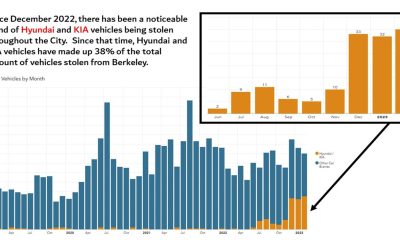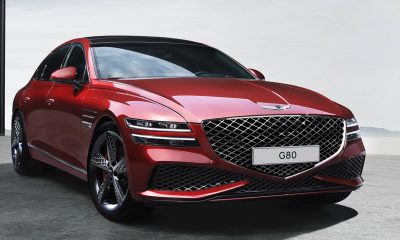Transportation
Car Review: 2016 Hyundai Tucson

By Frank S. Washington
NNPA Columnist
SUPERIOR TOWNSHIP, Mich. – As successful as Hyundai has been the last five years, there’s a flaw and they’re trying to fix it. The Korean automaker produces too many sedans and not enough crossover or sport utilities. The 2016 Hyundai Tucson is the first step towards solving that dilemma.
The new Tucson crossover that just went on sale is a little bit longer, wider and lower than the vehicle it replaces. And in calendar year 2016, Hyundai plans to produce 90,000 of them, almost doubling the estimated 56,000 it will produce this year.
Reason? One in three vehicles sold in the U.S. is either a CUV or an SUV. And while the Tucson held a 4.5 percent share of the CUV market five years ago, today that share has dropped to 2.5 percent. In other words, Hyundai has a shrinking share of a growing market and the automaker wants a bigger piece of the pie.
To do that, Hyundai concentrated on three areas in developing the new Tucson: design, performance and safety. Nothing new there; most automakers will cite similar formulas for developing a new vehicle but for some it is more talk than action.
Not at Hyundai. The automaker really did make some significant changes for the better in the Tucson. It now has optional LED headlights, LED daytime running lights, the new hexagonal grille adorned the front and it had a sculpted hood. There was also an available panoramic roof.
Aggressive wheel arches and available 19-inch alloy wheels and low roof rails were part of a package that gave the 2016 Hyundai Tucson a contemporary sophisticated look. It was not turning heads but it didn’t look dowdy or dull either. LED taillights and a chrome tipped dual exhaust adorned the back.
The bigger engine is now the base engine, the carryover 2.0-liter four cylinder that makes 164 horsepower and 151 pound-feet of torque. Mated to a six–speed automatic transmission, the engine gets 23 mpg in the city, 31 mpg on the highway and 26 mpg combine.
A premium power plant was the 1.6 liter turbocharged four cylinder engine that made 175 horsepower and 195 pound-feet of torque at 1,500 rpm. Mated to a new 7-speed dual clutch automatic transmission, it replaced the 2.4-liter engine on the older vehicle.
We test drove the Tucson with 1.6 liter engine in all-wheel-drive configuration. It got 24 mpg in the city, 28 mpg on the highway and 26 mpg combined.
This was a great engine. It sounded a little light at idle, but it had more than enough power for everyday driving. Our one quibble was that sometimes we felt a hitch in the transmission after we got underway from a full stop.
Sightlines were great, the A pillar had been narrowed so there was no problem seeing the entire road. The seats were comfortable, handling was pretty good, although our driving partner thought the steering was a little mushy.
And the vehicle’s range had been increased because the fuel tank was 1.1 gallons larger. It did not matter, our driving route was about 125 miles, which moved the fuel needle a little bit but not much.
Our test vehicle had three driving modes: normal, sport and eco. We could feel the difference in steering and throttle response with each one. Sport, of course, held each gear longer. But don’t get it twisted, the Tucson is not a sports car.
The Tucson felt solid. Body rigidity had been increased by 48 percent because of an increase in the use of high strength steel. The suspension was re-engineered for better handling and quicker response times. This crossover was really easy to drive.
And then Hyundai concentrated on advanced technology for the 2016 Tucson. Available are a hands free lift-gate that will open automatically, the height can be set. It had lane departure warning, blind spot detection, rear cross traffic alert, parking sensors and automatic emergency braking and pedestrian detection.
Creature comforts included heated and cooled front seats and heated second row seats. The vehicle had 31 cu. ft. of cargo space. For 2016, the Hyundai Tucson is equipped with the next generation of blueLink that includes emergency assistance, remote vehicle start and remote vehicle unlock.
The Tucson comes in six trim levels: the SE, SE Popular, Eco, Sport, Limited and Limited Ultimate. Prices range from $22,700 for a front-wheel-drive SE to $34,050 for an all-wheel-drive Limited Ultimate.
With the Tucson, Hyundai should snare a larger slice of the crossover pie.
Frank S. Washington is editor of AboutThatCar.com.














































